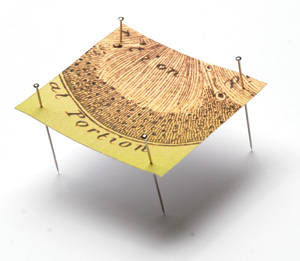In this article 
View / Download
pdf version of this article
Recent Reports
THERE HAVE BEEN RECENT REPORTS in the literature associating the use of statins with acute kidney injury (AKI). A study
by Hippisley-Cox and Coupland of over 225 000 patients starting statin treatment for the first time in England and Wales
found a dose-response association between statin treatment and acute kidney injury (AKI).1 Over 70% of these
patients were taking simvastatin.1 The increased risk of AKI was observed within one year of initiation and
remained for the first five years of treatment, returning to normal within one to three years of treatment ceasing.1
In their analysis, Hippisley-Cox and Coupland calculated numbers needed to harm (NNH) and numbers needed to treat (NNT)
for statin treatment in patients without cardiovascular disease, with a cardiovascular risk ≥ 15%. The NNT with any statin
to prevent one case of cardiovascular disease over five years was 44 for females and 38 for males.1 For females
the NNH for an additional case of AKI over five years was 593, and for males the NNH was 447.1 Potential harms
and benefits both increased in patients with cardiovascular risks ≥ 20%.1 For patients with elevated cardiovascular
risk, the benefits of statin initiation therefore clearly outweigh any increased risk of AKI.
A larger, and more recent study by Dormuth et al investigated the use of high and low-dose statins in more than two
million people in Canada, Great Britain and the United States. High-dose statin use was defined as ≥ 40 mg simvastatin,
≥ 20 mg atorvastatin or ≥ 10 mg rosuvastatin daily.2 A 34% increase in the relative risk of hospitalisation
for AKI within 120 days of initiation of high-dose statins, compared to low-dose statins, was reported in people without
chronic kidney disease (CKD).2 This risk remained elevated for at least two years of treatment, which was
the maximum follow-up period for each patient.2 Interestingly, the rate of hospitalisation for AKI did not
increase significantly in patients with existing CKD.2
Dormuth et al also calculated a NNH for high-dose statin use. They estimated that 1700 patients without CKD need to
receive high-dose statin treatment for 120 days (rather than low-dose statins), for one additional hospital admission
due to AKI to occur.2
Rhabdomyolysis is proposed as a mechanism linking statin treatment to AKI, although there was no evidence of this among
patients who had experienced an episode of AKI following statin treatment in the Dormuth study.2 Another possible
explanation is statin blockage of co-enzyme Q10, a fat soluble enzyme with antioxidant properties.2 Human
and animal studies have reported co-enzyme Q10 to be linked to improved kidney function in subjects with kidney disease.2
What do these studies mean for primary care?
The benefits of statins in reducing cardiovascular risk are well known. Given that the increased risk of AKI in patients
taking statins is modest and the mechanism for this association is unknown, there is currently insufficient evidence to
alter the prescribing of statins in primary care. However, in older patients with reduced kidney function there may be
a need for increased vigilance when initiating high-dose statin treatment.

An alternative explanation for the association between statins and acute kidney injury
The finding by Dormuth et al that patients with existing CKD who were on high-dose statin treatment were not at significantly
increased risk of AKI is unexpected. This may signal the need for caution when interpreting the results of this study.
Patients are prescribed statins because they have elevated vascular risk factors. These patients may therefore also
be at increased risk of renal atherosclerosis. Statin treatment could therefore be a confounding factor in both studies
that study design and analysis strategies may be unable to completely compensate for. High-dose statins are likely to
be prescribed for patients with higher vascular risk, and this could account for the increased rate of AKI associated
with high-dose statin use as reported by Dormuth et al. Furthermore, atherosclerosis is an ongoing process which may
explain why Hippisley-Cox and Coupland observed an increased risk of AKI for patients who used statins six months after
the medicine was stopped. The relative incidence rate ratio of AKI during use of simvastatin for males and females combined
was 1.57, compared to 2.21 during the six-month washout period.1
References
- Hippisley-Cox J, Coupland C. Unintended effects of statins in men and women in England and Wales: population based
cohort study using the QResearch database. BMJ 2010;340:c2197.
- Dormuth CR, Hemmelgarn BR, Paterson JM, et al. Use of high potency statins and rates of admission for acute kidney
injury: multicenter, retrospective observational analysis of administrative databases. BMJ 2013;346:f880.